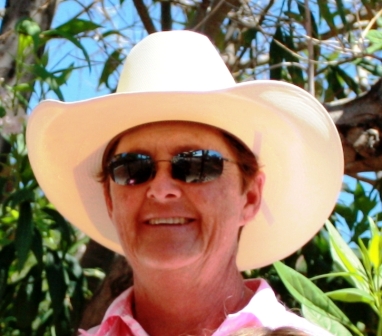
The best gait for conditioning
This subject is so important, as these majestic beasts can’t tell us how they are feeling. That said, if you are a real horseman and spend time with your horse, you know they do tell us how they are feeling, to a certain degree. If we choose not to pay attention, our horses can suffer without us even knowing it.
Remember that last office picnic or family reunion? How you played volleyball for two hours when you hadn’t played a sport in years? Remember how sore you were the next day? Well, that is how your horse feels on Monday when you have ridden him into a sweat both weekend days without a conditioning program set up for him during the week.
This is a subject that is extremely important to the well-being of your horse. In my work conditioning race horses, polo ponies, jumping horses, and weekend trail horses, I have had success with animals staying sound and healthy well into their teen years by using common sense and a bit of education, with the horse’s well-being at the forefront. My focus here will be on conditioning to ride on the weekends.
With fall and cooler weather, we must consider shorter daytime hours, and keeping our horses in condition with less time and opportunity to devote to them. Of the three gaits — walk, trot/jog, and canter — I believe the walk is the most overlooked gait.
To me, walking is the foundation for all conditioning programs. It increases blood flow through the body, tightens and strengthens tendons and ligaments, and allows the body to cool down after faster exercise.
You can use it both to warm your horse and prepare the body for more strenuous work, and to cool down and recover from faster exercise before asking the body to do more. As a trainer, I spend time at the walk not only for conditioning, but to control my horse’s mind as well. Something as simple as walking over logs or circling around a barrel or bush helps focus the horse and prepare him mentally for what I am going to ask next. If he is focused and relaxed, his body is going to respond better to a conditioning program. And if he knows he is going to walk when you mount, he may stand better and be altogether more relaxed, as he won’t anticipate being asked to go right out of the gate.
Some horses tend to look forward to getting ridden so much, they want to go fast right away. If you insist that they walk, they will become more willing to obey. And as far as I am concerned, if the walk is flat-footed and not hurried, they can walk as fast as they want.
Suppose your horse was ridden quite a bit this summer and fall, and is fairly fit. As you lose daylight hours and have to cut back, three days a week is the minimum for keeping him in some degree of fitness. This will also keep him in enough work that he is not so fresh on the weekend.
Here is a sample conditioning program for a horse that is relatively fit, and can be exercised three times a week, preferably at least once midweek.
On the weekend, you might trot 10 minutes, walk 10, trot 10, canter 21/2, walk 5, canter 2 1/2, walk 10.
During the week, if you have only 30 minutes, you could lunge your horse in the corral at the walk and trot for 20 to 30 minutes, or go for a quick ride. By eliminating the canter, you will keep heart rate and breathing from going so high that you have to take time to cool down.
See you out there on the ditch this winter, walking your happy horses — may your ear muffs be toasty and your gloves nicely mended!
Kathy G. O’Neal runs Livery Training Stables in Corrales, where she teaches both English and Western riding to adults and children, trains riders for competition, and boards horses.Visit her website at www.liverytraining.com
